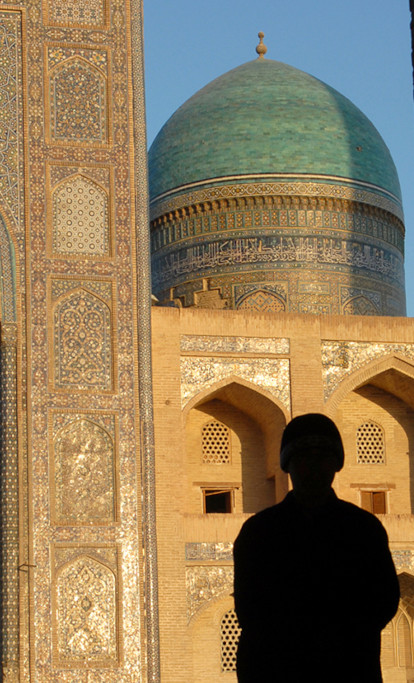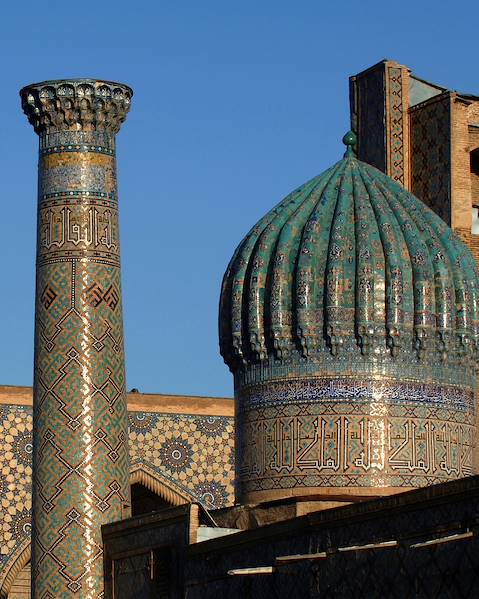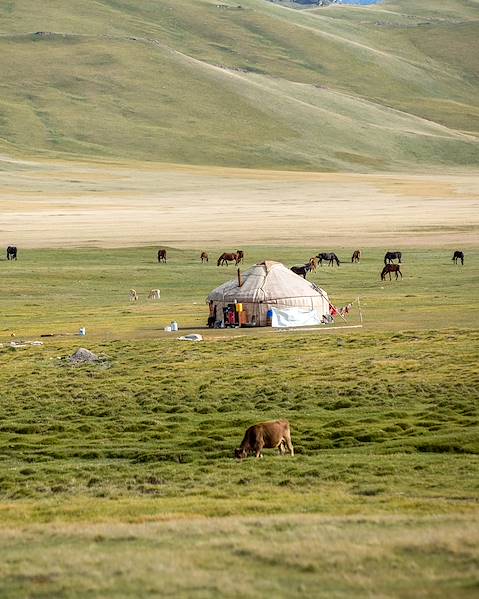From north to south and east to west, the “Stans” are finally starting to get the recognition they deserve. And with ancient Silk Road cities, a rich Arabic heritage and a fascinating Soviet history, Uzbekistan might just be the crown jewel of them all. From riding a camel through the desert to learning about tradition silk production, read on to discover the best things to do in Uzbekistan.
Discover Silk Road Cities
Owing to its history as one of the most important nations along the Silk Road, Uzbekistan is home to a range of ancient cities, but three in particular stand out for us: Samarkand, Khiva and Bukhara. In Samarkand you can marvel at the breathtaking Registan Square, which marks the halfway point along the famed transcontinental trading route. The square is particularly beautiful in the evening, when the three madrassas (Arabic educational institutions) are illuminated in a golden light. In Khiva you can make your way into the ancient walled city, within which you can snap shots of respondent ceilings, ornate blue-tiled murals and carved sandstone pillars. And finally, in Bukhara you can wind your way through the medieval centre, admiring the hundreds of exceptionally well-preserved mosques, madrassas and bazaars.
Ride a Camel Through the Desert
Standing proud as the 11th largest desert in the world, the sweeping Kyzyl Kum (red sand) desert is best explored the traditional way: on the back of a friendly camel. You can ride out to Lake Aydarkul, which is a great place to admire local fish and bird species before jumping into the water for a refreshing dip. To elongate your Indiana Jones-style desert adventure, we can whizz you off across the dunes in a 4x4 to a yurt camp where you can stargaze with local nomads around a campfire.
Learn About Silk and Ceramic Production in the Fergana Valley
Uzbekistan has a rich history as a nation of artisans and is the third-biggest exporter of silk in the world. The lush Ferghana Valley is world-renowned for its production of ikat silk, which involves tie-dying colours and patterns into the thread before the silk is woven. We can arrange for you to visit both the silk ikat weaving centre and the craft centre in Margilan to learn about the labour-intensive production process. The nearby town of Rishtan is the place to go to purchase elegant pieces of Uzbek ceramics to take home with you.
Eat Plov in Tashkent
Uzbek Plov (also referred to as pilaf) is a source of national pride across the nation and is eaten at birthdays, weddings and every other celebration in between. The dish consists of deeply fired meat and vegetables slow cooked with rice on a wood-fired kazan (a cast-iron cauldron). As you wind though the streets and bazaars of the bustling capital of Tashkent, it is difficult to resist the temptation to follow your nose into the heart of an authentic restaurant - so don’t! Trust your senses, get lost and enjoy tucking into Uzbekistan’s national dish.
Admire Soviet Art in Nukus
The remarkable Savitsky Museum world's second-largest collection of Russian Avant Garde art, second only to the Russian Museum in St. Petersburg. The museum was the brain-child of Igor Savitsky, a Ukranian artist who transported around half of the current paintings to Nukus during the Soviet era to prevent them from being destructed elsewhere for not adhering to the Socialist Realism style demanded by the government. A visit to the museum is a great opportunity for culture and history-buffs alike to travel back a few decades into the world of life in the USSR reflected in the many moving paintings.















